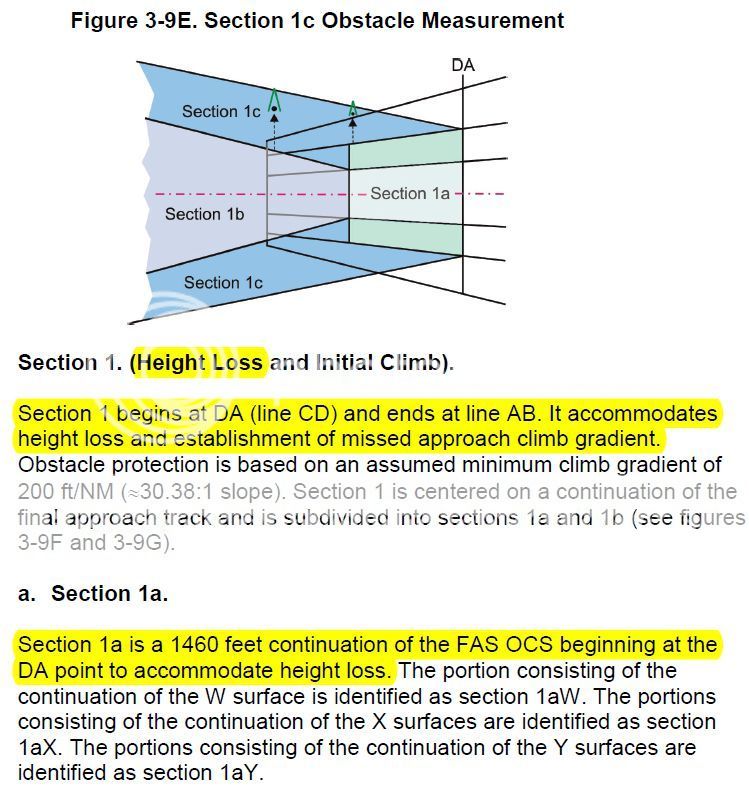For the OP let's add a couple of thoughts to add to this for him to ponder.
Keep in mind the words have specific meaning to a pro. And we private schlubs may not be thinking this way.
"A decision to CONTINUE the APPROACH"... Emphasis added.
Here's why...
"The approach light system, except that the pilot may not descend below 100 feet above the touchdown zone elevation using the approach lights as a reference unless the red terminating bars or the red side row bars are also distinctly visible and identifiable."
You can descend below DA and still have to go missed with only the approach lights visible but you have to have the red terminator bars or the side row bars visible to go below 100' AGL above the touchdown zone elevation.
Note, it does not say the runway itself is visible at DA. Nor that you can legally land out of it. Just that you can continue down below DA to 100' AGL above the number printed next to TDZE on your plate.
Is this WAY below most folk's personal minimums if they can possibly avoid it?
Absolutely.
But... I got a rare chance to do it, in actual IMC, with Jesse sitting right next to me, and a solid plan to go elsewhere if it didn't work.
Ground fog at KLNK during one of my training flights, and severe clear and VFR only a few hundred feet above us, for a quarter or more, of the State of Nebraska. Twinkling stars, lights of Omaha clearly visible when on top of it.
The decision at DA was to CONTINUE the APPROACH. Not to land.
Now why the emphasis on APPROACH? That's what killed the FedEx crew. They switched to "VMC brain mode" because they saw the runway and drove toward it.
The APPROACH still had minimums that needed to be heeded and understood to remain clear of obstacles all the way to the runway. They got bit.
So there were actually two approaches for us.
One was a solid missed approach.
We assessed and Jesse asked my opinion on a second attempt. (Checking my decision making skills, and comfort level. This is the real deal, dummy... Make the call!)
The controller asked at about the same time.
I said "standby" and said out loud... "All the accident reports in this stuff seem to always have the story that the pilot tried the approach numerous times and then either screwed it up or ran out of gas. We have the fuel to fly a long time, we have an 'out' nearby, so I'll take ONE more shot at this and then we're headed to Omaha."
Jesse smiled and said, "Ok."
(Meanwhile a big hint that had been going on for a while that I would have picked up on now, but was way too behind things THEN, was the controller rattling off changing RVR numbers for both our knowledge and the inbound commercial IFR operators that night. They know those guys can't even start the approach without a high enough RVR, so he was announcing them as it changed to no one in particular. Note: If you hear a controller doing this, you're probably in for a very low approach... Heh.)
Second approach there were two callouts. Right before DA Jesse reminded me of the above rule. (Just about froze my brain solid right then, too. Haha.)
At DA, we saw the rabbit, and the approach lights (as they're passing below us basically) but not the red stop bar or side bars. The runway was still obscured in the fog. (By the way, this was at night.)
I announced "Continue" with the full intention that a go-around was VERY imminent and with a fast scan including the ILS staying centered, and the ability to see the altimeter winding down to that magic 100' AGL number above the TZDE.
While taking quick glances outside, caught the rest of the runway environment appearing out of the fog.
Second callout, "Landing". As in, "we just met the criteria to go below that 100' AGL number".
At this point I could now transition to being visual outside 100%. If the fog bank had changed the visibility again, I was still hair triggered to perform an instant missed approach.
So... Yes. Below DA can happen in real world weather, and you have to know the terms have a meaning to the pros.
"Continue" and "Approach" aren't "fly to the runway". And they're not a commitment to land.
Now. In the training environment I've NEVER heard of a DPE attempting to test this on a Private ride.
You're coming down the approach with a view limiting device and they say "you have only the rabbit and the approach lights, you do not see anything else" and then before 100' above the TDZE they say "you see the red stop bar", and then "you see the runway". They could test it, but it's going to be fruitless because at the "approach lights" notification you'd have to lift the device and add the window to your scan, and you'd see the runway anyway.
So... All that said. DA+80 is dumb. Someday you're going to need to know you can "continue" even below DA to 100' above TDZE. It's still just an approach at this point, and you can still need to go missed.




